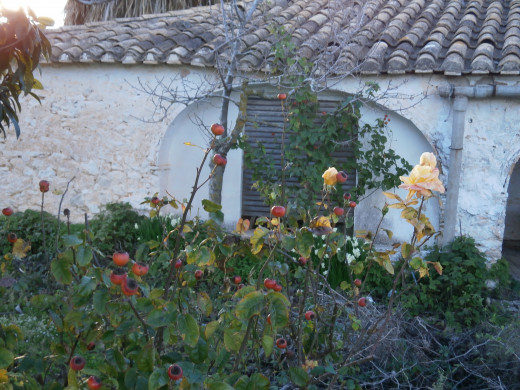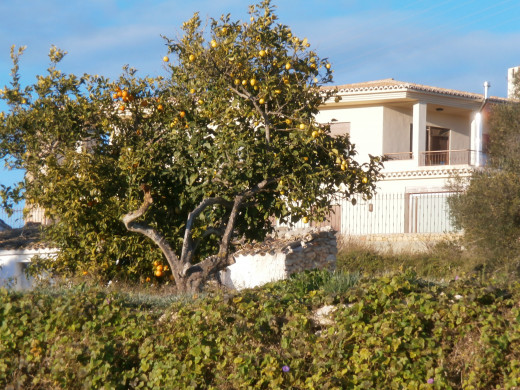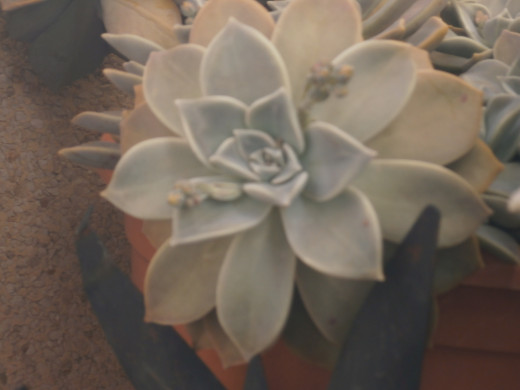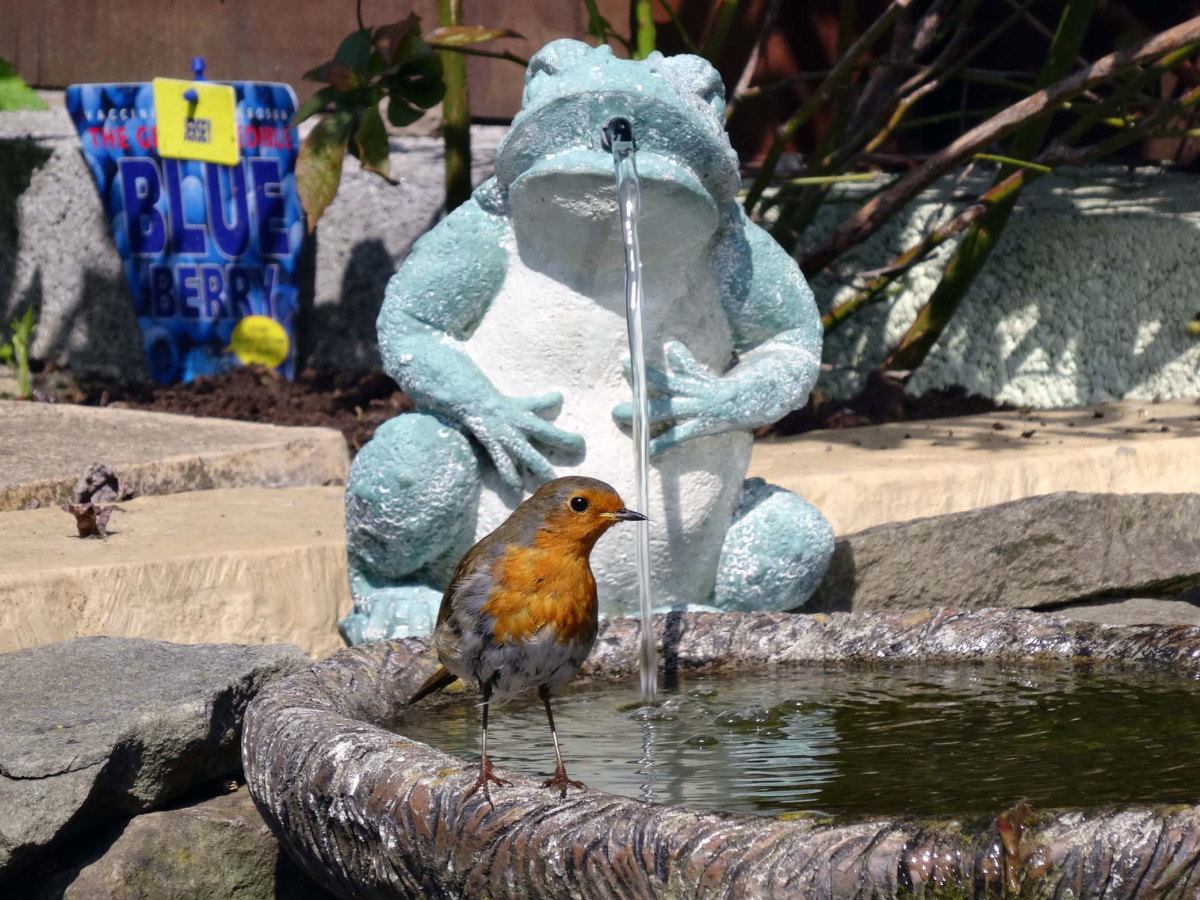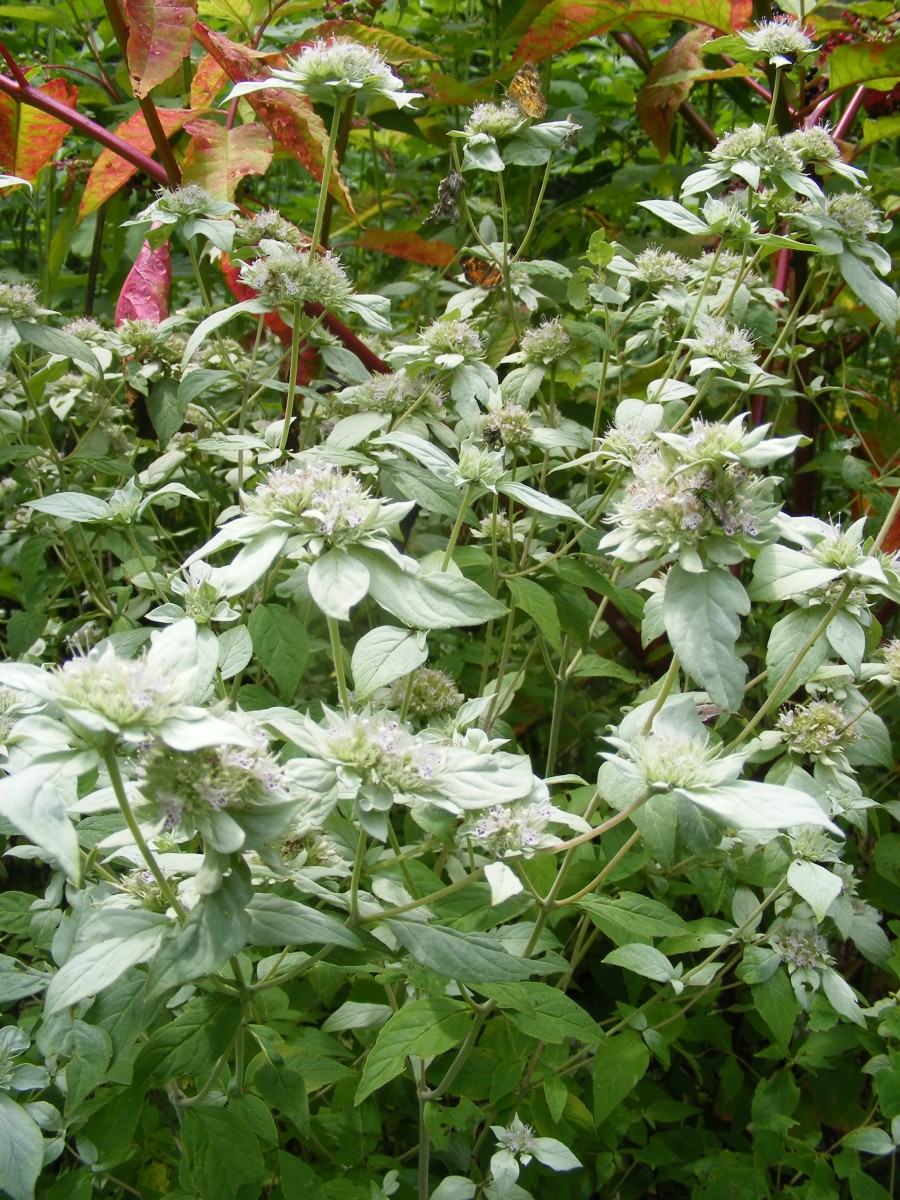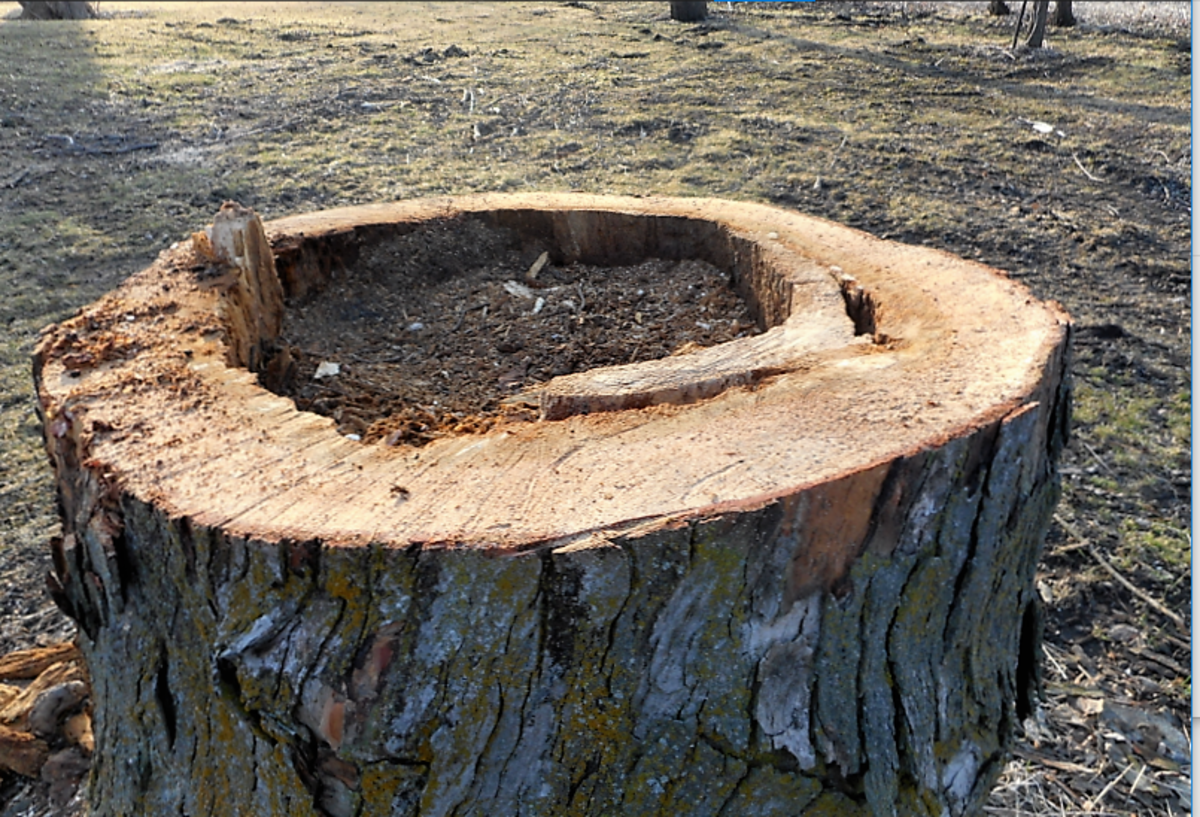- HubPages»
- Home and Garden»
- Gardening»
- Organic Gardening
101 Easy Gardening Tips for A Better Garden:The Beginner Gardener’s Handbook
Roses in early summer
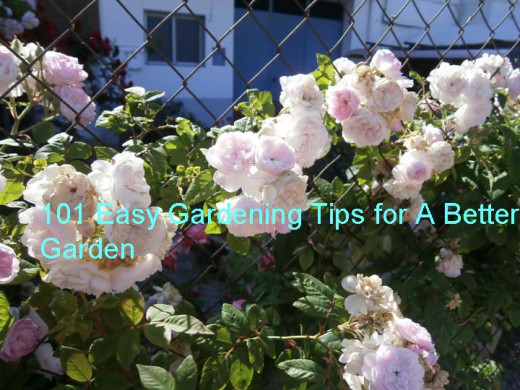
What would you like to grow in your garden?
If you are new to gardening it may seem like a daunting task. Deciding on what to grow in your garden and what type of garden you would like may not be easy for someone who is new to gardening.
Perhaps before you start it is a good idea to sit down and decide what sort of gardener you are going to be. Do you want to grow vegetables, herbs or flowers? Perhaps you would like to grow a little bit of everything.
If you would like to grow a little of everything perhaps you should consider a cottage garden but if you would like to specialize in herbs and vegetables, a traditional kitchen garden might be for you.
Are you planning organic and pesticide free garden? Organic gardening is becoming very popular way to garden and can really help the environment. A natural garden is also more sustainable.
I have been a passionate gardener for many years, and I still love to garden but perhaps now on a much smaller scale. A garden does not have to be a traditional garden with grass, it can also be a small space such as balcony garden. It can also be an indoor garden with house plants and perhaps even sprouts.
In this article I am going to share 101 easy to follow gardening tips and I hope you find them useful.
10 Top Tips for an Organic Garden
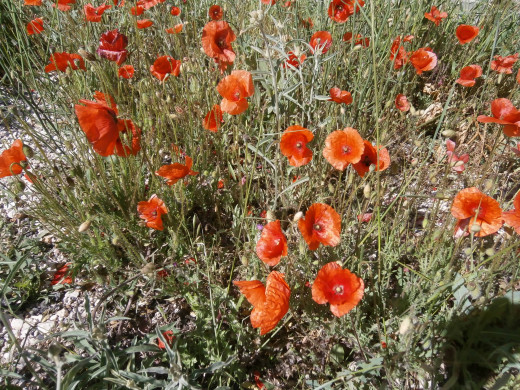
10 Top Tips for an Organic Garden
1) Compost – creating a compost heap is essential for the organic garden. Not only does it provide a place to discard grass cuttings or vegetable peelings but it also provides good quality compost for the garden. Another major advantage of making your own compost is that you know exactly how it was produced. Composts heaps are also much appreciated by hibernating creatures such as hedgehogs.
2) Fertilizers – producing your own fertilizer is an excellent alternative to commercial fertilizer which often contain toxins which can interfere with the balance of your garden. Believe it or not but stinging nettles make an excellent all around fertilizer.
3) Companion planting – companion planting is not a new concept. It is a tried and tested method which means you grow certain plants next to each other. For instance lavender and roses make great companions, the lavender will deter greenfly from infesting roses, and they also look great grown together.
4) Friendly insects – encouraging friendly insects into your garden is another easy idea to implement. The best friend of any gardener is the intrepid Lady Bird. Lady Birds love to over winter in old logs so make sure you place a few of those around the garden.
5) Lunar gardening – lunar gardening is a thousand year old concept. It is based on the idea that certain plants should only be sown or harvested during a certain phase of the moon. Devotees swear by this method, and many of them have very healthy gardens.
6) Save water – saving water goes hand in hand with organic gardening. An easy way to conserve water in your garden is to install a drip feed system. They are not expensive to install and will make the most out of any rain water which falls naturally. Don’t forget to invest in some good quality rain catching tubs.
7) Improve your soil quality – improving your soil quality will help to keep plants healthy. Plants such as roses appreciate a bit of sand so help them by adding sand when you plant them. Consider adding the herb comfrey to your compost. Comfrey helps to improve soil quality and may even help keep many common pests away.
8) Grass cuttings – don’t compost all your grass cuttings. Vegetables such as cabbages which are loved by caterpillar will benefit from a generous sprinkling of grass cuttings. Sprinkle fresh grass cutting around the base of the cabbage and hopefully you should never be troubled by cater pillars again.
9) Yeast – if you have an ant invasion in your garden place saucers of yeast and syrup in the affected areas and the ant invasion will soon be stopped.
10) Beer – beer is the organic gardener’s best friend when it comes to slugs. Slugs seem to home in on certain plants such as Hostas. Place jars of beer next to your Hostas, and the slugs love of beer will get the better of them. All you need to do is to empty the drowned slugs the next morning.
Top 10 Easy To Grow Vegetables
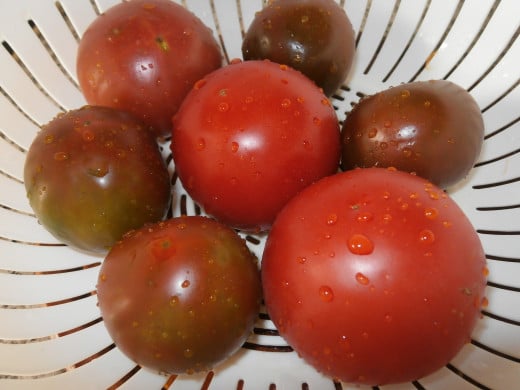
Time to Garden - Be honest with yourself
How much time do you have per week to spend in your garden?
Top 10 Easy to Grow Vegetables
There is such a wide range of vegetable which you can grown but if you are new to gardening start off with easiest and hardiest vegetables first of all.
1) Tomatoes – not only do most of us eat tomatoes but they are a very versatile vegetable to grow. They can be grown in hanging baskets, in a green house or directly in the garden. Tomatoes offer a staggering amount of produce, and hardy tomatoes such as the Money Maker variety also taste delicious.
2) Zucchini – we often neglect zucchinis when we start our vegetable garden but they produce in abundance and very seldom suffer from diseases. Another advantage is that they produce lovely flowers which can also be eaten.
3) Carrots – carrots come in lots of different varieties. Plant shallot onions with your carrots to avoid the dreaded carrot fly.
4) Kale – kale is part of the cruciferous vegetable family and is very each to grow. It also looks great and Purple Kale is a nice addition to any cottage garden.
5) Leeks – leeks sown in the spring often last well after the first frost.
6) Brussels sprouts – Brussels sprouts are a must have for any garden. They will keep going often through to spring and will bring a steady supply to your kitchen.
7) Lettuce - don’t think that lettuce always has to be grown in the ground. It is quite at home in balcony boxes or pots.
8) Swiss Chard – did you know that chard often grow better when grown in hanging baskets? Not only do you get a great tasting vegetable but you will have some pretty dramatic hanging baskets to show off as well.
9) Celery – celery is great for soups and stews. Don’t bother sowing from seed as the bottom of the celery will easily grow again. This is another great vegetable to grow in a pot.
10) Winter green – winter greens such as mustard greens will often stay fresh in your garden throughout the winter. They can also be grown in pots or in a small balcony box. Mustard greens can also be enjoyed as sprouts, and make a great winter salad vegetable.
Gardening in Spain
Click thumbnail to view full-size


A Quick Look at Companion Gardening
Good Companions
| Bad Companions
|
|---|---|
Camomille
| Peas
|
Parsley
| Onions
|
Asparagus
| Runner Beans
|
Tomatoes
| Fennel
|
Celery
| Tomatoes
|
Even gardens need a rest
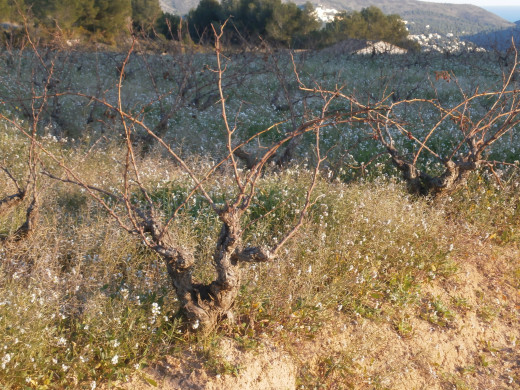
Sustainability
it is important to plan your garden and there are some important things which you need to remember when you plan your garden:
1) How much time do you have to devote to your garden?
2) What is the climate like where your live?
3) Will pets share your garden?
4) Will children share your garden?
5) Which plants are in the garden already?
6) Do you have any naturally occurring plants?
7) Any damp areas?
8) Very dry areas?
9) What sort of gardener do you want to be? Fruit, flowers, wild life
10) Do you want a space to sit out and enjoy the garden?
How to Cope With Bug and Pest Infestations Naturally
There are many chemical treatments available when it comes to protecting your precious plants but do you actually need to use them? Nature is often the best defense and working together with nature can have long term positive results.
1) Aphids – did you know that aphids hate stinging nettles? Make your own aphid repellent using nettles. Gather up a large bunch of nettles and cut them up. Leave them in two pints of water for 24 hours and then sieve. Spray onto the plants and spray again after five days.
2) Moles – moles are insect hunters and may help to consume unwanted caterpillars, larvae of unwanted critters but most gardeners think of the as pests. Planting milk spurge plants ( Euphorbia lacteal) will help to keep the moles out.
3) Earwigs – if you plan to grow a lot of soft fruits you need to keep these pests out of garden. Put empty paper tubs or empty sun flowers stems at the bottom of your precious soft fruits, and the earwigs will happily crawl in to them. Earwigs are very important so do empty your tubes somewhere the earwigs can’t do any harm.
4) Rats – a very common garden pest once you start growing fruit and vegetables. The herb Valerian (Valeriana offinicalis) will help to keep rats away. Cats are attracted to Valerian so this might help as well.
5) Rust – rust is a brown fungus which can damage many garden plants. Planting beans around your garden will help to keep rust away.
6) Caterpillars – sprinkling fresh grass cuttings will help to keep caterpillars away. They will literally crawl the other way.
7) Scales insects – a mixture of soap and Methylated Spirits will help to control scale insects. See separate recipe.
8) Fungi – try to keep plenty of space between your plants to improve airflow but fungus infections can creep in any way. A good treatment is onion water which you can make yourself. See separate recipe.
9) Slugs and snails – beer is the best defense against slugs and snails but rhubarb leaves work as well. Place rhubarb leaves next to precious plants such as Hostas. The slugs and snails will crawl in under the rhubarb leaves and attach themselves to it. Just remove the following day.
10) White fly – white fly can be a very common tomato pest. Protect your tomato plants by planting Nasturtiums next to them.
Add a wild life pond to your garden
Top 10 Plants to Encourage and Attract Wildlife into Your Garden
It is nice to be able to enjoy some wildlife in your garden but with a bit over clever planting your garden can easily become a refuge for struggling wild life.
Planting to encourage wild life will make your garden more enjoyable, and you will be doing a good deed as well.
1) Buddleia – both butterflies and moths are attracted to Buddleias
2) Sedum – the famous ice plant can attract a variety of useful insects to your garden.
3) Lavender – loved by all and sundry but a favorite of bees
4) Water lilies – we seldom think of water lilies as a plant species that encourage wildlife into your garden but they do. Ask a frog what they think about hanging around on water lily leaves on a hot summer’s day.
5) Thistles – thistles are important to many migrating species of birds.
6) Hawthorne – a common hedgerow plant which can provide shelter for nesting and berries for food.
7) Hedging plants – hedging plants such as box are popular with bird species which like to nest close to the ground.
8) Solomon’s seal – a plant which loves to grow in the shade part of the garden, and much loved by hedgehogs. Solomon's seal is now almost extinct in the wild due to habitat loss.
9) California Poppies – a lovely border plant which provides good ground cover for ground dwelling creatures, especially loved by grass snakes I have found through the years
10) Yarrow – another hedgerow plant which brings pollinating insects into the garden.
10 easy fruits to Grow
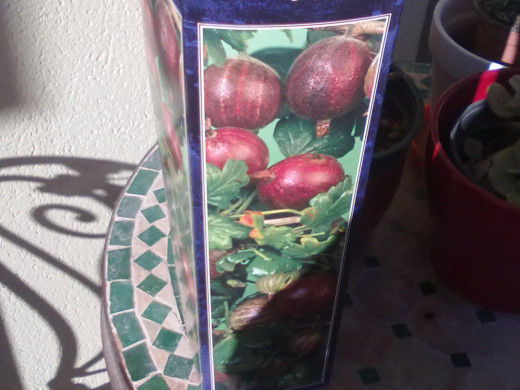
Top 10 Easy to Grow Fruits
Many gardeners complain that traditional soft fruits such as raspberries are now very expensive when they are available and raspberries have therefore become one of the most popular fruits to grow in your average garden. But apart from raspberries there are many other easy to grow fruits.
1) Apples – apple trees don’t need to be large to produce fruit. There are now some great new varieties available which can even fit the smallest of gardens.
2) Pears – Conference pears are really delicious. The nice thing about Conference pear is that you can trim the tree so a relatively small tree can produce a lot of fruit.
3) Gooseberry – this is a soft fruit bush which very hardy. It produces a lot of fruit which can be turned into jam and backed into pies.
4) Raspberries – raspberry bushes are becoming more and more popular. Our modern gardens are smaller but raspberries take up a relatively small space. They are easy to freeze and even the leaves of the bush can be used to produce raspberry tea.
5) Blueberries – it is wonderful to be able to pick wild blueberries but they can also be easily grown in a garden. You don’t need to plant them directly in the ground as they are just as much home in pots and hanging baskets.
6) Strawberries – the secret to good strawberries is to try to protect this delicate fruit. Spread straw around the bottom of your strawberries to avoid pests and to protect the berries and you will get the most delicious fruits.
7) Plums – Victoria plums are still the world’s favourite plum. Easy to look after, produce lots of plums and taste great. What more can you ask for?
8) Currants – black and red currants are quite different in taste and textures. Black currants make great jam and juice whilst the more delicate red currant makes a great jelly.
9) Peaches – believe it or not peaches can be quite hardy, and will grow in a sheltered area. One idea is to grow your peach tree in a large pot which can be moved indoors during cold spells.
10) Figs – if your garden faces south you should try growing figs. Italy is well known for producing figs and whilst it is warm in the summer, winters in Italy can be quite cold.
10 Easy to Grow Plants
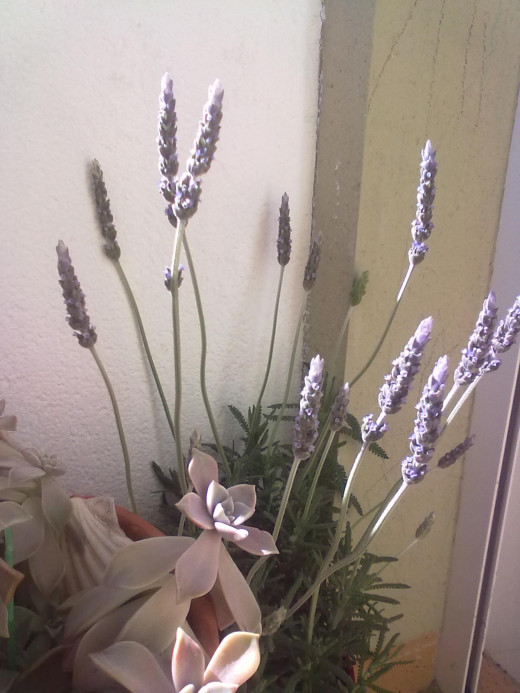
Top 10 Easy to Grow Plants
Some plants are more difficult to grow than others and after you have been gardening for a few years you may want to become more adventurous.
1) Marigold – marigold or Calendula is a wonderful addition to any garden. They self seed and do not suffer pests. Also a great companion plant for many vegetables, and makes a good skin ointment.
2) Lavender – easy to grow and loves poor quality soil. Lavender is another great companion plant and can be pruned once a year. Sprinkle leaves and flowers on the ground to improve soil quality.
3) Rosemary – a very useful kitchen herb and a good addition to any medicine cabinet. Both lavender and rosemary can make endless user friendly home remedies.
4) Roses are often seen as a difficult plant but this is far from the truth. There is an endless variety available and pale climbing roses are often sweetly scented.
5) Honeysuckle – if you are growing roses in your garden consider adding a honeysuckle or two as well. Not only are they great companion plants but they look so wonderful together.
6) Cosmos – cosmos is an old fashioned cottage garden plant which has become quite rare. It is easy to grow and there are now some great color choices available.
7) Sweet peas – this flexible flower can be grown directly in the ground or in tubs. I have never met anybody who does not like the smell of sweet peas.
8) Foxglove – digitalis is indeed poisonous but for the first time gardener it is a no fuss plant. It grows quickly, shows off, self seeds and available in a range of colours. What else can you ask for?
9) Sunflowers – tall or short ones, they never fail impress. Leave to set seeds in your garden and the local birds will thank you for it.
10) Valerian is not only hated by rats and loved by cats but it flowers for a long term, and its extensive net work of roots will hold on the soil in your garden.
How to Spot and Identify Diseases
There are many diseases which can affect the plants in your garden but some of them are more common than others.
1) Club root – can affect both the vegetable garden and wall flowers. The roots become swollen and distorted which causes the above ground part of the plant to grow smaller and eventually die. Sprinkling lime into the soil can help to prevent the problem and so can crop rotation.
2) Black Root Rot – once again very common and can affect Begonias, Sweet Peas and Geraniums. Above ground the leaves will turn yellow and wilt, and the roots become black. There is no cure but never using leaf mold around these plants will help.
3) Tuber Rot – fungal rot is a very common problem when it comes to Dahlias. The good news it can be easily prevented. Lift the tubers out once a year and leave to dry well, and clean off any soil. Store the tuners in a frost free place but do remember to look in on them from time to time.
4) Flea beetle – flea beetle attacks are becoming more and more common. They love young plants and can be easily be seen. The damage plants are left with small holes in the leaves. Spray with nettle mixture every other couple of days and they will soon be gone.
5) Damping off – this is a fungi which can attacks roots and stem bases of seedlings. This is more common if you grow your seedlings under glass so make sure there is plenty of ventilation. Remove any collapsed seedlings immediately.
6) Cold damage – a sudden cold snap can affect developing leaves. The chlorophyll is destroyed and this results in a yellow or white leaf, sometimes creating banded or fringed areas. Pick off affected leaves and the plant will grow on happily.
7) Aphids are the most common annual infestations and there are many different types of aphids. The most common aphids are the Black Bean and Peach Potato aphid. Leaves will appear distorted and may be covered in a sooty mould. Spray with nettle mixture and the plant should heal itself.
8) Red Spider Mite – if your plants have been infested with Red Spider Mite they will a bronze colour and appear to wilt. If you look closely you will see a very fine silky webbing. Once again spray with nettle mixture.
9) Viruses - plant viruses are likely to be introduced from new stock so check out any new stock very carefully. Leaves may be crinkled with yellow spots or patches. Sadly there is no cure so lift and burn.
10) Leaf Spot – this is the name of a wide range of diseases which can affect plants. Look out for irregular shapes on leaves. Control can be difficult and it is best to pick off the affected leaves.
Grow Your Own Plants from Seed
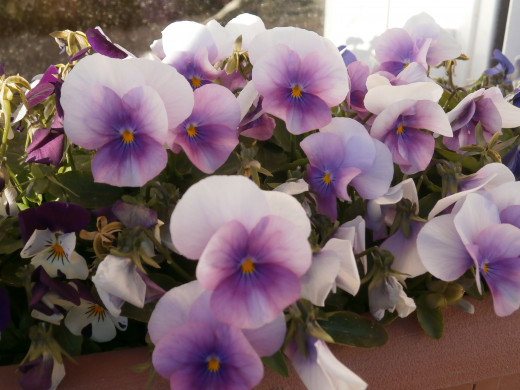
10 Easy Flowers to Grow from Seed
There is nothing more satisfying than growing your own plants and flowers from seeds.
Of course, there is and endless choice of flowers and plants but as I started to develop my own garden, I quickly learned that there are some flower seeds which are more user friendly than others.
1) Cornflower: Cornflower is also known as Knapweed and is one of the easiest seeds of all. You can start them off in March in a green house but I have always preferred to sow mine directly in the border in May. Cornflowers which are sown directly in the border tend to flower once during the summer and again towards the autumn
2) Pelargonium: Pelargonium seeds are best started off in the greenhouse or on a warm windowsill. They germinate quickly so be prepared to transplant into pots within about three to four weeks.
3) Nasturtium: A very versatile flower, excellent for climbing up walls and good ground cover. Sow seeds in April where they are to flower or in February in a cooler greenhouse. Once again they germinate quickly so be ready with your pots.
4) Pansies: Pansies are one of our most loved garden flowers, and are excellent for planting at the front of a border or flowerbed. Sow indoors in trays in February-March and remember to leave about 5 cm in between each seed. Leave in the tray and plant out in May.
5) Nicotiana: Nicotiana is commonly known as the Tobacco Plant and is famous for its evening fragrance. Sow seeds in March in gentle heat and plant out in late May. Nicotiana is always best sown in trays.
6) Nigella: Nigella or Love-in-a-mist is another easy to grow flower which also self seeds. If you want an early show, sow seeds in autumn or for a late summer flowering, sow seeds in early spring where they are to flower.
7) Flax: Flax is a wonderful flower and very tolerant. New color varieties include yellow and red so look out for those. Good ground cover and an be sown in April where they are to flower.
8) Poached Egg Flower: The Latin name for Poached Egg Flower is Limanthes. This is one of the easiest seeds to get to flower and will self seed prolifically. Sow seeds in March directly in the flower bed.
9) Morning Glory: One of the easiest climbers to start off yourself. It is important to sow seeds in individual pots in March. Plant out in the border in late May, or in tubs.
10) Cosmos: Cosmos thrives in most gardens and come in some wonderful colors. The variety Cosmos bipinnatus “ Sonata” will appear clear white in the moon light. Sow seeds in March and plant out in late May.
There are of course many others but the above flowers will give your garden a variety of colors and different heights.
Grow Plants from Bulbs
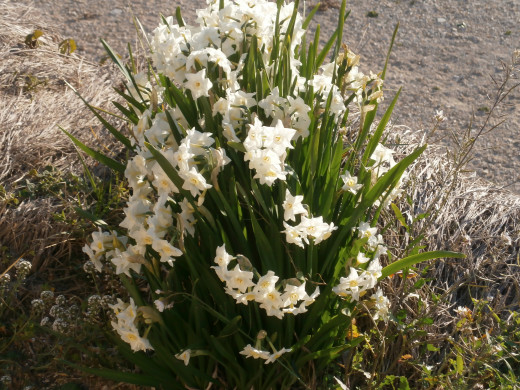
10 Bulbous Plants for Low Maintenance Gardens
Bulbs are great for the busy gardener and many bulbs do come up during the spring when your garden might look quite bare and without color. I have always focused on spring bulbs in my garden but with the odd summer flowering bulbous plant thrown in.
Spring flowering bulbs are also very obliging as they tend to silently fade away and make room for summer perennials and annuals.
1) Daffodils: Daffodils are just wonderful in the spring garden. They flower faithfully around Easter time every year.
2) Lily of the Valley: Lily of the Valley is not only one of the most fragrant of the bulbous plants but also thrives in shady parts of the garden.
3) Gladiolus: Gladiolus or Sword Lily is an excellent summer flowering bulb. It has a long flowering season and can often flower from May to June.
4) Snowdrops: No garden is complete without snowdrops. They are often the first flower to appear and love to grow in light shade.
5) Swamp Lily: Swamp Lily or Crinum is well worth considering. It is a real show off plant and flowers in late summer when perhaps other flowers are starting to fade away.
6) Crocus: Crocus is just as much home in the lawn as they are in the border. These early flowering bulbs are low maintenance and come back year after year.
7) Chionodoxa: Glory of the Snow is the common name for this early spring flowering bulb. Sadly ignored by many gardeners but a real no fuss addition to your garden which naturalises easily.
8) Giant Himalayan Lilly: If you would like something which looks really unusual in the garden but is easy to care for you should go for one if these. Easily reaches a height of 9ft. The Latin name is Cardiocrinum.
9) Anemone: There are now many varieties of Anemone. Some flower early and others flower a bit later during the summer.
10) Allium: Lots of varieties again but easiest one to care for is yellow flowering Allium moly.
Make Your Garden User friendly
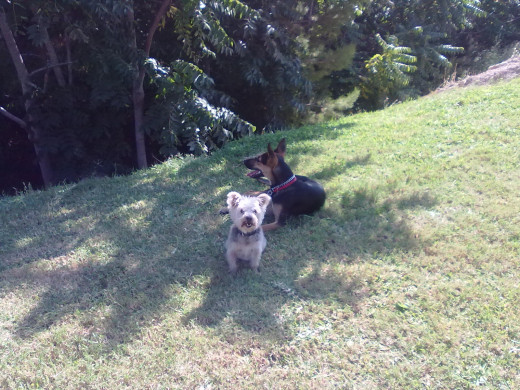
10 Tips How to Make Your Garden User Friendly
Apart from working in your garden, you also want to make sure you have time to enjoy your garden. Your garden may not only be your personal space so it is important to make sure you make your garden user friendly for everybody.
1) Dogs - dogs love garden as much as you. Make sure they have plenty of space to run around.
2) Cats - cats also appreciate a nice garden. Remember to include cat friendly plants such as kitty grass and chamomile.
3) Children - don't forget children. They might appreciate a swing or a separate play area.
4) Create a secret garden - away from the main garden for quiet time.
5) Seating area - enjoy your hard work with a generous seating area.
6) Eating in the garden - a barbecue area can never hurt.
7) Wendy house or a tree house - a Wendy or a tree house is often appreciated.
8) Bird table - attract feathered visitors to your garden with a bird table and a bird bath.
9) Maintenance area - a shed where you can keep all your tools is a great addition, perhaps even a potting shed.
10) A green house to start off your plants and for growing more exotic plants.
There is a garden out there for everybody
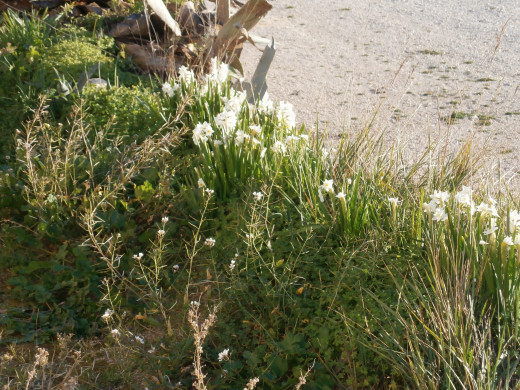
Tip 101
Always remember to garden for your circumstances. If you don’t have a lot of time, don’t create a massive garden which will only frustrate.
Always bear in mind the natural conditions and climate where you live. The number one trick to create a sustainable garden is to work with nature not against it.
© 2014 Annie Messeri

